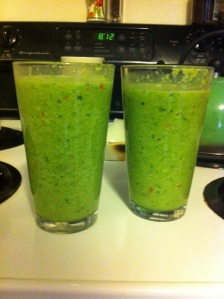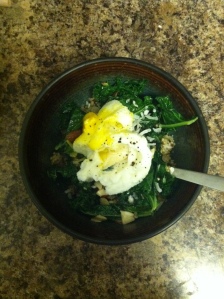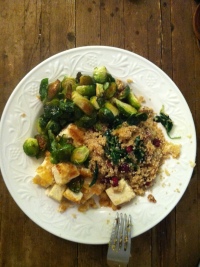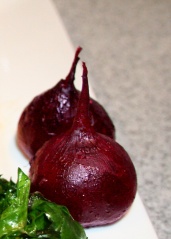 I’ve been wanting to write a blog on turmeric for awhile, as it’s one of my latest “discoveries”. Well, I’ve been wanting to write ANY blog lately, so here it goes!
I’ve been wanting to write a blog on turmeric for awhile, as it’s one of my latest “discoveries”. Well, I’ve been wanting to write ANY blog lately, so here it goes!
Turmeric is one of the latest “in” spices in the United States, but in places such as India they have known for a long time that this spice has many health benefits. There it is used not only in cooking dishes, but in medicines as well and it is thought to help with a multitude of ailments.
Curcumin is the main compound in turmeric that has been studied for its health benefits, primarily the fact that it is an anti-oxidant and anti-inflammatory. It is well established that chronic inflammation is bad for us, so turmeric may have a role in fighting that, but the dose is up for debate, as it probably takes more turmeric than you would find in a single entrée to receive any real health benefit. It is of note that curcumin is only a small constituent of turmeric, and not a well absorbed one at that. It is better absorbed if consumed with black pepper, but still the amount one gets from food is relatively small, unless consumed on a regular basis-which maybe we should be!
Turmeric may also help with improved brain function and heart health, as well as cancer prevention. The list goes on, although those are the main ones with the most research on them. Given all these possible health benefits, I think it’s worth incorporating turmeric into your diet, as long as you are not relying on it alone to fix any health issues. You may have even had turmeric already and not even known it- it’s what gives curry its yellow color. By the way it can stain, so be careful when cooking with it. I have the yellow baking sheets to prove that!
You can buy turmeric supplements to get a bigger dose, but I always prefer food first. It doesn’t have a strong flavor, so can easily be added to dishes you already make. Try adding it to soups, stews, and curries, sprinkling it over roasted sweet potato cubes or eggs, or try the recipe below.
Cauliflower “Buddha” Bowl with Chicken Sausage
Makes 2 servings
2 cups cauliflower rice (can find pre-made at Trader Joes)
2 cups shredded or quartered Brussels sprouts (can find pre-shredded at Trader Joes)
1 small sweet potato, peeled and shredded
2 sweet apple chicken sausage links (pre-cooked), sliced into ½ inch thick coins
2 eggs, poached
1 teaspoon turmeric
Black pepper, to taste
Salt, to taste
Light/cooking olive oil
Heat 1-2 tablespoons olive oil in a large skillet over medium heat. Add cauliflower, turmeric, and black pepper and mix well. Add Brussel sprouts to cauliflower and cook until soft, 5-10 minutes. Sprinkle with salt, if desired. Add chicken sausage and cook another 2-3 minutes, until sausages are warmed and lightly browned.
Meanwhile, in a separate pan, heat another tablespoon of olive oil and add sweet potato. Cook hash brown style, stirring occasionally, until browned and crispy, 10-15 minutes.
Eggs may be poached or cooked sunny side up in a small pan with cooking spray. Leave yolks slightly runny to create a “sauce” for the bowl.
Divide all ingredients evenly amongst 2 bowls and top with poached eggs. Mix and enjoy!









